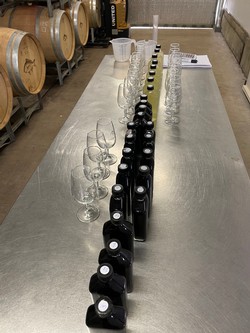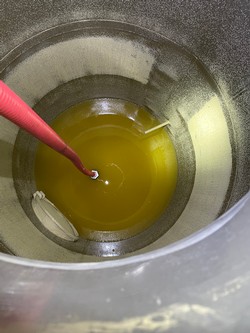What happens to wine after fermentation?
What happens to a wine after fermentation is complete?
The Post-Fermentation Processes at Upper Reach
Once the exhilarating process of fermentation has run its course, our attention turns to meticulously crafting the final character of our wines.
Here's what happens after the yeast have finished fermenting and so the juice has now turned into wine:
1. Cooling and Sulphur Additions:
The first step we cool the wine to 5 degrees Celsius. This sets the stage for stability and freshness. A touch of sulphur is added to make sure the yeast stops fermenting and safeguards the wine's fresh fruit qualities.
2. Fining Trials:
Our pursuit of excellence continues with fining trials.
Bentonite goes first, it helps with protein stability which stops any cloudiness in the final product.
Following the addition of bentonite, the wine is allowed to rest for 1-2 weeks, so the sediment can settle before the crucial process of racking.
3. Racking:
With precision and care, we separate the clear juice or wine from any sediment accumulated at the tank's bottom. This step is essential for maintaining the wine's purity and clarity.
4. Polishing with Fining Agents:
A variety of fining agents, including Isinglass, skim milk, and egg white, are carefully trialed to see if they enhance a wine's texture and clarity.
These fining agents can reduce any astringent or bitter notes, and in red wines they can soften the tannins.
However, we're discerning; not every wine needs fining, and sometimes the wine we've made is already perfect and fining doesn't improve it!
 5. Cold Stabilization:
5. Cold Stabilization:
After adding the best fining agent, we also start cold stabilization. Cold stabilisation is when we chill the wine to specific temperatures (-2 degrees for whites and 0 degrees for reds).
This is a precautionary measure which minimizes the risk of crystals forming in the bottle when stored in at home.
The tartaric acid cyrstals are coating the sides of the tank in the photo. They are completley harmless and tasteless, tartaric acid is the naturally occuring acid in grapes- it just doesn't look very pretty in your wine.
The winery is freezing over these weeks, we'll be wearing thermals and generally try to book a sneaky holiday, it's that cold!
6. Filtering and Preparation for Bottling:
After enduring the chill for at least three weeks, the wine emerges ready for its final transformation.
Through careful filtration and gentle warming, we prepare our creations for the moment they meet your glass.
Join us on this journey, where science meets tradition, and every bottle tells a story.